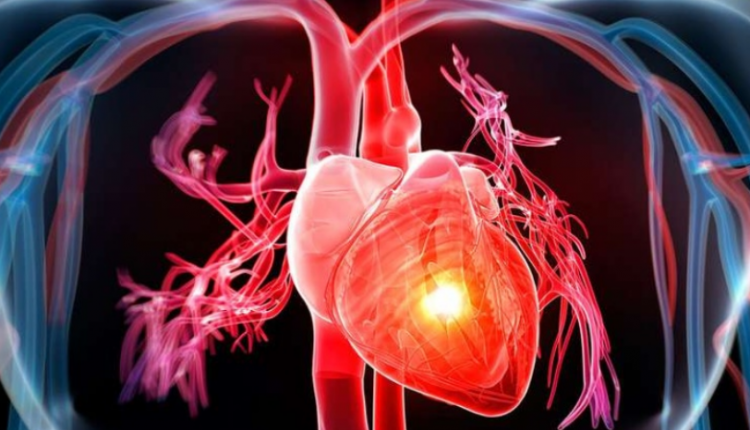
Structural heart disease: causes, symptoms, diagnosis and treatment
Structural heart diseases are abnormalities of the heart valves that escape diagnosis due to symptoms that increase with age such as fatigue, breathlessness and difficulty climbing stairs
The name of this disease seems less frightening than the others as the word structural does not suggest an immediate danger.
However, their seriousness should not be underestimated, as structural heart diseases affect about 12% of the population over 65.
What are Structural Heart Diseases (SHD)
Structural heart diseases are chronic degenerative heart diseases characterised by alterations in the structure of the heart and include valvular diseases such as aortic stenosis, mitral regurgitation and tricuspid regurgitation.
They are attributable to functional decline and ageing and require the replacement of heart valves due to their deterioration and progressive wear and tear of the heart muscle.
These valve repair or replacement operations are necessary because deteriorated valves, if left untreated, account for a 90% mortality rate five years after their diagnosis.
How to diagnose structural heart defects
Valve disease can escape diagnosis as many symptoms are non-specific; symptoms that will manifest themselves as the disease progresses.
For diagnosis, however, auscultation of the heart muscle would be sufficient to detect abnormalities and proceed with more in-depth checks and tests in order to get a correct and complete diagnostic picture.
Symptoms will be: irregular heartbeat, transient ischaemic attack, coronary artery disease, chest pain, swelling in the lower limbs, hypertension, dizziness or fainting, breathlessness and fatigue, kidney dysfunction.
In adulthood, it will be more difficult to detect structural heart disease.
It will be possible to diagnose it with an echocardiogram and cardiac MRI, chest X-ray and electrocardiogram to observe the shape of the heart and assess the rhythm of the heart muscle.
Catheterisation will be used to identify where blood vessels are blocked or narrowed.
Treatment and prevention of structural heart disease
The patient will not be prescribed any treatment for structural heart disease but tests will be used to monitor the disorder.
Treatment may be necessary in severe cases such as valve replacement, heart transplantation or open-heart surgery.
In the area of prevention, if the structural heart disorder should manifest itself after birth, one will aim to prevent atherosclerosis and clogged arteries by following healthy eating styles, exercising regularly, and following pharmacological treatments aimed at managing hypertension.
Read Also
Emergency Live Even More…Live: Download The New Free App Of Your Newspaper For IOS And Android
Atrial Fibrillation: Definition, Causes, Symptoms, Diagnosis And Treatment
Ventricular Fibrillation Is One Of The Most Serious Cardiac Arrhythmias: Let’s Find Out About It
Atrial Flutter: Definition, Causes, Symptoms, Diagnosis And Treatment
Patent Foramen Ovale: Definition, Symptoms, Diagnosis And Consequences
Sinus Tachycardia: What It Is And How To Treat It
Inflammations Of The Heart: Myocarditis, Infective Endocarditis And Pericarditis
Aorta Surgery: What It Is, When It Is Essential
Abdominal Aortic Aneurysm: Symptoms, Evaluation And Treatment
Spontaneous Coronary Artery Dissection, Which Heart Disease Is Associated With
Coronary Artery Bypass Surgery: What It Is And When To Use It
Do You Have To Face Surgery? Post-Surgery Complications
What Is Aortic Regurgitation? An Overview
Diseases Of The Valves Of The Heart: Aortic Stenosis
Interventricular Septal Defect: What It Is, Causes, Symptoms, Diagnosis, And Treatment
Heart Disease: The Atrial Septal Defect
Interventricular Defect: Classification, Symptoms, Diagnosis And Treatment
Arrhythmias: The Alterations Of The Heart
Identifying Tachycardias: What It Is, What It Causes And How To Intervene On A Tachycardia
Cardiac Rhythm Disturbance Emergencies: The Experience Of US Rescuers
Cardiomyopathies: Definition, Causes, Symptoms, Diagnosis And Treatment
How To Use An AED On A Child And An Infant: The Paediatric Defibrillator
Aortic Valve Surgery: An Overview
Cutaneous Manifestations Of Bacterial Endocarditis: Osler Nodes And Janeway’s Lesions
Bacterial Endocarditis: Prophylaxis In Children And Adults
Infective Endocarditis: Definition, Symptoms, Diagnosis And Treatment



